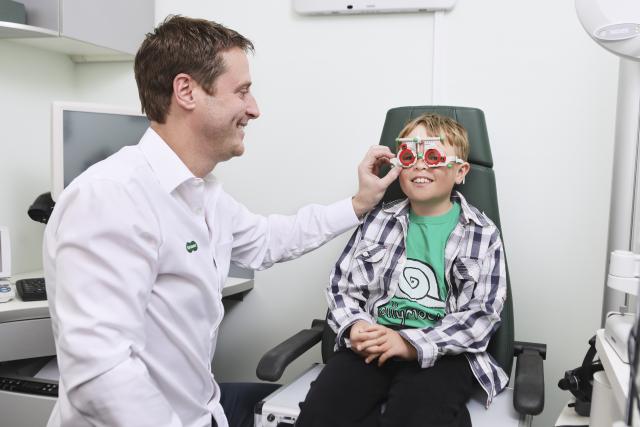
With the return of the school year and screen time increasing for children, Yarra Ranges optometrists are encouraging parents to take their kids for an eye test.
Australian children aged eight and under are spending an average of 2.5 hours per day on screens – more than double World Health Organisation’s recommendations, new research by Specsavers has revealed.
Despite this and with the increasing prevalence of myopia (short-sightedness) brought on by digital eye strain, almost one in three (29 per cent) of young children have never had an eye test.
In the Yarra ranges there are 19,063 children up to nine years of age who could be spending too much time on screens, and unknowingly increasing their risk of myopia.
To ensure every child enjoys a healthy start to the new year, Yarra Ranges Optometrists are calling for parents and carers to include an eye test on their health checklist to start off the new school year.
“As Optometrists, we like to encourage parents and carers to ensure their children have their first eye test before starting school to detect and correct or manage any issues, so they don’t go untreated,” Lilydale Specsavers Optometrist Keryn Wallace said.
“Children’s eyes are still developing during their schooling years, and myopia, or as its more commonly known, short sightedness, is on the rise in children globally.”
Along with the alarming screen time statistics, 86 per cent of parents say they are concerned about the amount of time their child spends on screens and its impact on their eye health.
The research found that children have access to multiple devices within the home including a TV (76 per cent), tablet (65 per cent), mobile phone (48 per cent), computer (40 per cent) and hand-held gaming device (22 per cent).
Households where children have access to hand-held video games and laptops reported the most screen usage, hitting closer to three hours a day.
“Screen time is typically unavoidable between school, study and entertainment, but I encourage parents and carers to ensure young children get adequate breaks from screens and ‘close up’ work to avoid digital eye strain or developing myopia,” Ms Wallace said.
“Children who spend more than three hours a day on screens are more likely to have had their eyes tested as a result of already experiencing headaches and blurry vision.
“If your child complains about headaches, blurred vision, trouble focusing or any other issues with their eyes, I recommend booking an appointment with an optometrist immediately rather than waiting until their next check-up.”
Keryn’s top tips for digital eye strain include:
1. Remind children to blink. Blinking regularly keeps the surface of your eyes from drying out.
2. Keep a bottle of water close-by. Your eyes dry out when you’re dehydrated so making sure children are drinking plenty of water throughout the day is important.
3. Follow the 20-20-20 rule. This means, every 20 minutes remind children to shift their eyes to look at an object at least 20 metres away, for at least 20 seconds. The easiest way to do this is to take small ‘window’ breaks and look out at a faraway object to give tired eyes a break from the screen.
4. Make sure that during the school week, children spend time playing outside or stepping away from the screen to do another activity to give their eyes a break.
Optometrists around the country are encouraging parents and carers to bring children in for an eye test and keep monitoring screen time. It is recommended that children of all ages get a routine eye test every two years unless directed otherwise by their optometrist.
To book your appointment or for more information, go to https://www.specsavers.com.au/stores.






